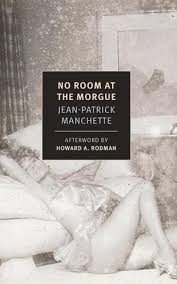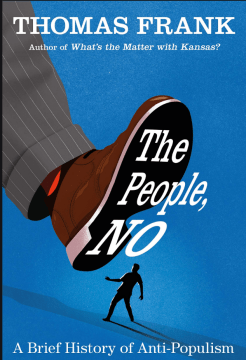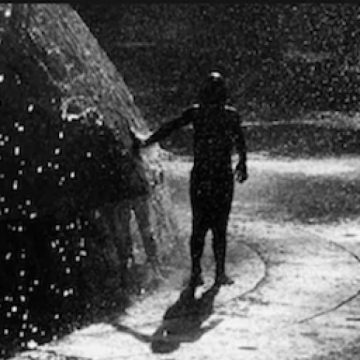Lauren Michele Jackson in The New Yorker:
 The story of Disney’s “The Lion King,” about a cub who avenges his uncle’s regicide, is said to have borrowed its bones from “Hamlet” (though Marlon James would say otherwise). “Black Is King,” the new “visual album” from Beyoncé Giselle Knowles-Carter, borrows its bones from “The Lion King,” and is comparably interested in rehearsing the drama of its source material—which is to say, not very interested at all. The project is a cinematic adaptation of “The Lion King: The Gift,” the Beyoncé-produced companion album to Disney’s 2019 remake of the film, in which she voiced the part of Nala and for which she created an original song. “Black Is King” follows a young child (Folajomi Akinmurele) whose wayward adventures and visions provoke the question of what kind of man he will become. Royal titles are treated, with urgency, as a means of affirming the innate worth of the human spirit, a message that the film aims especially at the many Black peoples who were long denied the status of human (and, depending on who is asked, still are). Anchored by the lyrical grandeur of its soundtrack, which includes the fourteen songs co-written and co-produced by Beyoncé for “The Gift” (“black parade,” a bonus single on the deluxe edition of the soundtrack, plays during the credits),“Black Is King” expertly slides between talk of bloodlines and molded thrones and more modest—but far from modest—footage of impeccably styled, beautiful Black people in motion.
The story of Disney’s “The Lion King,” about a cub who avenges his uncle’s regicide, is said to have borrowed its bones from “Hamlet” (though Marlon James would say otherwise). “Black Is King,” the new “visual album” from Beyoncé Giselle Knowles-Carter, borrows its bones from “The Lion King,” and is comparably interested in rehearsing the drama of its source material—which is to say, not very interested at all. The project is a cinematic adaptation of “The Lion King: The Gift,” the Beyoncé-produced companion album to Disney’s 2019 remake of the film, in which she voiced the part of Nala and for which she created an original song. “Black Is King” follows a young child (Folajomi Akinmurele) whose wayward adventures and visions provoke the question of what kind of man he will become. Royal titles are treated, with urgency, as a means of affirming the innate worth of the human spirit, a message that the film aims especially at the many Black peoples who were long denied the status of human (and, depending on who is asked, still are). Anchored by the lyrical grandeur of its soundtrack, which includes the fourteen songs co-written and co-produced by Beyoncé for “The Gift” (“black parade,” a bonus single on the deluxe edition of the soundtrack, plays during the credits),“Black Is King” expertly slides between talk of bloodlines and molded thrones and more modest—but far from modest—footage of impeccably styled, beautiful Black people in motion.
…The album’s knowingly ethnic splendor is mesmerizing in its scope; it does not attempt to provide cultural lessons but, rather, invitations to awesome delights. Above all, “Black Is King” is a tribute to the manifold ways that a body can be displayed, from root to toe, dressed up and painted in white, gold, seafoam, lilac, electric green, and pink; in cowhide, denim and tulle, ink, acrylic, lace, leopard, and satin, and fringe; cowry shells and goddess braids; bejewelled everything; good shirts tucked into good chinos; pearl-drenched headdresses, harnesses, thick gold rings; gowns and bleached tips, evening gloves, track jackets, catsuits, tunics, chunky sneakers, mammoth gele; cornrows, ribbon-wrapped feet, cargo pants, and trapezoidal shades. Also, the manifold ways in which a body can move: legwork, footwork, shaku shaku, zanku, twerk, wine, gbese, thrust, grind, shake—the grounded, weight-changing style of choreography that Beyoncé has been fond of since working with the Mozambican trio Tofo Tofo on “Run the World (Girls),” which is prominently shown here in her duet with the Afrobeats artist and divine dancer Stephen Ojo, in “already,” performed with Shatta Wale and Major Lazer. Though Beyoncé, when she appears onscreen, is usually at its center, “Black Is King” also cedes the floor to such charismatic movers as the Afropop artist Yemi Alade, who is featured on “don’t jealous me” and “my power,” alongside the South African artists Moonchild Sanelly and Busiswa and also a supreme slate of professional dancers. There is, in our present moment, a palpable, and reasonable, fatigue when it comes to the superlative showiness of a certain class of celebrity. Some of this sticks to Beyoncé, in particular, given the outsized scale at which she has been working for a while now. But this production—or, rather, the dozens of credited designers, stylists, artists, tailors, architects, weavers, seamstresses, builders, braiders, jewellers, and dancers whose crafts are on display in it—marvels in a way that is difficult to scoff at, especially given that we aren’t likely to see such feats again soon.
More here.
 Kashmir’s new Domicile Law is a cognate of India’s new blatantly anti-Muslim Citizenship Amendment Act (CAA) passed in December 2019 and the National Register of Citizens (NRC) that is supposed to detect ‘Bangladeshi infiltrators’ (Muslim of course) who the home minister has called ‘termites’. In the state of Assam, the NRC has already wreaked havoc. Millions have been struck off the citizens register. While many countries are dealing with a refugee crisis, the Indian government is turning citizens into refugees, fuelling a crisis of statelessness on an unimaginable scale.
Kashmir’s new Domicile Law is a cognate of India’s new blatantly anti-Muslim Citizenship Amendment Act (CAA) passed in December 2019 and the National Register of Citizens (NRC) that is supposed to detect ‘Bangladeshi infiltrators’ (Muslim of course) who the home minister has called ‘termites’. In the state of Assam, the NRC has already wreaked havoc. Millions have been struck off the citizens register. While many countries are dealing with a refugee crisis, the Indian government is turning citizens into refugees, fuelling a crisis of statelessness on an unimaginable scale.
 We also fall in love again with the irreverent, brilliant Kahlo, who is both charming and insolent in every anecdote. She feels Breton’s accommodations and manners are beneath her and ends up sexually entangled with his wife, Jacqueline Lamba (Breton gets to watch). And there is much delight to be had in Kahlo’s repeatedly expressing her disdain for French culture, especially its artistic circles. “I [would] rather sit on the floor in the market of Toluca and sell tortillas, than to have anything to do with those ‘artistic’ bitches of Paris.” (Bitches seems to be her favorite word for Parisians!) Indeed, the French seem to misunderstand her; the poet Robert Desnos says to Petitjean’s father at one point, “Your friend’s pretty, she could have stepped right out of a display at your Museum of Ethnography.” But we are assured Petitjean is “more attracted to her personality and her culture than her exotic ‘ethnic’ appearance.” In normal circumstances, this would seem shaky, but given the character of Michel, we buy it. Both Petitjeans gain our trust so fully that we don’t question their Occidentalist magnanimity at certain awkward points; while France and the French are belittled by our French author, Kahlo’s Mexico is championed as a center for the arts.
We also fall in love again with the irreverent, brilliant Kahlo, who is both charming and insolent in every anecdote. She feels Breton’s accommodations and manners are beneath her and ends up sexually entangled with his wife, Jacqueline Lamba (Breton gets to watch). And there is much delight to be had in Kahlo’s repeatedly expressing her disdain for French culture, especially its artistic circles. “I [would] rather sit on the floor in the market of Toluca and sell tortillas, than to have anything to do with those ‘artistic’ bitches of Paris.” (Bitches seems to be her favorite word for Parisians!) Indeed, the French seem to misunderstand her; the poet Robert Desnos says to Petitjean’s father at one point, “Your friend’s pretty, she could have stepped right out of a display at your Museum of Ethnography.” But we are assured Petitjean is “more attracted to her personality and her culture than her exotic ‘ethnic’ appearance.” In normal circumstances, this would seem shaky, but given the character of Michel, we buy it. Both Petitjeans gain our trust so fully that we don’t question their Occidentalist magnanimity at certain awkward points; while France and the French are belittled by our French author, Kahlo’s Mexico is championed as a center for the arts. No Room at the Morgue and its sequel, Que d’os!, are the only two of Manchette’s novels to feature a private eye as protagonist. Though in Manchette there’s never a shortage of killers for hire, killers for the hell of it, casual psychotics, mercenaries, and the corruption of each and every institution, there are relatively few police in his policiers, and very little mystery about the who in whodunit. The Tarpon novels are in some sense a throwback to a time when the genre was more tightly defined, its tropes less problematic. We’ve got a down-at-heels PI here, and bad guys, and a femme-more-or-less-fatale, and a couple of cops either of whom could be played by Lino Ventura. But Manchette certainly isn’t slumming, or doing a genre turn to please his fans. As Manchette asks, “What do you do when you re-do [the classic American crime novels] at a distance—distant because the moment of that something is long gone? The American-style polar had its day. Writing in 1970 meant taking a new social reality into account, but it also meant acknowledging that the polar-form was finished because its time was finished: re-employing an obsolete form implies employing it referentially, honoring it by criticizing it, exaggerating it, distorting it from top to bottom.” Or as he put it more bluntly (and more flamboyantly): “The overtures of the ‘neo-detective novel’ have been progressively conquered by literary hacks (of Art) or by Gorbachev-loving Stalino Trotskyist racketeers.”
No Room at the Morgue and its sequel, Que d’os!, are the only two of Manchette’s novels to feature a private eye as protagonist. Though in Manchette there’s never a shortage of killers for hire, killers for the hell of it, casual psychotics, mercenaries, and the corruption of each and every institution, there are relatively few police in his policiers, and very little mystery about the who in whodunit. The Tarpon novels are in some sense a throwback to a time when the genre was more tightly defined, its tropes less problematic. We’ve got a down-at-heels PI here, and bad guys, and a femme-more-or-less-fatale, and a couple of cops either of whom could be played by Lino Ventura. But Manchette certainly isn’t slumming, or doing a genre turn to please his fans. As Manchette asks, “What do you do when you re-do [the classic American crime novels] at a distance—distant because the moment of that something is long gone? The American-style polar had its day. Writing in 1970 meant taking a new social reality into account, but it also meant acknowledging that the polar-form was finished because its time was finished: re-employing an obsolete form implies employing it referentially, honoring it by criticizing it, exaggerating it, distorting it from top to bottom.” Or as he put it more bluntly (and more flamboyantly): “The overtures of the ‘neo-detective novel’ have been progressively conquered by literary hacks (of Art) or by Gorbachev-loving Stalino Trotskyist racketeers.” The population of bacteria in the pancreas increases more than a thousand fold in patients with pancreatic cancer, and becomes dominated by species that prevent the immune system from attacking tumor cells. These are the findings of a study conducted in mice and in patients with pancreatic ductal adenocarcinoma (PDA), a form of cancer that is usually fatal within two years.
The population of bacteria in the pancreas increases more than a thousand fold in patients with pancreatic cancer, and becomes dominated by species that prevent the immune system from attacking tumor cells. These are the findings of a study conducted in mice and in patients with pancreatic ductal adenocarcinoma (PDA), a form of cancer that is usually fatal within two years. Donald Trump was headed to historic Jamestown to mark the 400th anniversary of the first representative assembly of European settlers in the Americas. But Black Virginia legislators were boycotting the visit. Over the preceding two weeks, the president had been engaged in one of the most racist political assaults on members of Congress in American history. Like so many controversies during Trump’s presidency, it had all started with an early-morning tweet. “So interesting to see ‘Progressive’ Democrat Congresswomen, who originally came from countries whose governments are a complete and total catastrophe, the worst, most corrupt and inept anywhere in the world (if they even have a functioning government at all), now loudly and viciously telling the people of the United States, the greatest and most powerful Nation on earth, how our government is to be run,” Trump tweeted on Sunday, July 14, 2019. “Why don’t they go back and help fix the totally broken and crime infested places from which they came. Then come back and show us how it is done. These places need your help badly, you can’t leave fast enough.”
Donald Trump was headed to historic Jamestown to mark the 400th anniversary of the first representative assembly of European settlers in the Americas. But Black Virginia legislators were boycotting the visit. Over the preceding two weeks, the president had been engaged in one of the most racist political assaults on members of Congress in American history. Like so many controversies during Trump’s presidency, it had all started with an early-morning tweet. “So interesting to see ‘Progressive’ Democrat Congresswomen, who originally came from countries whose governments are a complete and total catastrophe, the worst, most corrupt and inept anywhere in the world (if they even have a functioning government at all), now loudly and viciously telling the people of the United States, the greatest and most powerful Nation on earth, how our government is to be run,” Trump tweeted on Sunday, July 14, 2019. “Why don’t they go back and help fix the totally broken and crime infested places from which they came. Then come back and show us how it is done. These places need your help badly, you can’t leave fast enough.” “Forward! Brave people! The goddess of liberty leads you on!” So declares Count Egmont, the protagonist in Goethe’s exquisite 1788 play, Egmont, a tragedy based on the Dutch revolt of the late 16th century. “And as the sea breaks through and destroys the barriers that would oppose its fury, so do ye overwhelm the bulwark of tyranny, and with your impetuous flood sweep it away from the land which it usurps.”
“Forward! Brave people! The goddess of liberty leads you on!” So declares Count Egmont, the protagonist in Goethe’s exquisite 1788 play, Egmont, a tragedy based on the Dutch revolt of the late 16th century. “And as the sea breaks through and destroys the barriers that would oppose its fury, so do ye overwhelm the bulwark of tyranny, and with your impetuous flood sweep it away from the land which it usurps.” When I was 19, in the summer of 1995, I fell in love with an owl. I’d just spent two weeks in Primorye in the Russian far east – a wild, mountainous province bordering the Sea of Japan, China and North Korea. It is a region of dense forests, rolling mountains, clean rivers and spectacular coastlines. Exotic locations were nothing new for me: I was born in the United States but grew up in a diplomat’s family, bouncing around the world from Uruguay to Panama as a young child, and to West Germany and Canada as a teen. Before the age of 16, I’d only lived in the United States for two years.
When I was 19, in the summer of 1995, I fell in love with an owl. I’d just spent two weeks in Primorye in the Russian far east – a wild, mountainous province bordering the Sea of Japan, China and North Korea. It is a region of dense forests, rolling mountains, clean rivers and spectacular coastlines. Exotic locations were nothing new for me: I was born in the United States but grew up in a diplomat’s family, bouncing around the world from Uruguay to Panama as a young child, and to West Germany and Canada as a teen. Before the age of 16, I’d only lived in the United States for two years. Thomas Frank is one of America’s more skillful writers, an expert practitioner of a genre one might call historical journalism – ironic, because no recent media figure has been more negatively affected by historical change. Frank became a star during a time of intense curiosity about the reasons behind our worsening culture war, and now publishes a terrific book, The People, No: A Brief History of Anti-Populism, at a time when people are mostly done thinking about what divides us, gearing up to fight instead.
Thomas Frank is one of America’s more skillful writers, an expert practitioner of a genre one might call historical journalism – ironic, because no recent media figure has been more negatively affected by historical change. Frank became a star during a time of intense curiosity about the reasons behind our worsening culture war, and now publishes a terrific book, The People, No: A Brief History of Anti-Populism, at a time when people are mostly done thinking about what divides us, gearing up to fight instead. In Khalidi’s latest book, The Hundred Years’ War on Palestine, history proves once again to be the key to understanding the present. He builds on his previous work, interspersing personal and family stories with political ones and tracing the lineage of violence that has engulfed a land that has been known by many different names. In doing so, Khalidi identifies many of the actors who have been instrumental to the Palestinian cause, the revolutionaries, women, and young people who helped build the fabric of Palestinian life within the shadow of endless war, displacement, and occupation.
In Khalidi’s latest book, The Hundred Years’ War on Palestine, history proves once again to be the key to understanding the present. He builds on his previous work, interspersing personal and family stories with political ones and tracing the lineage of violence that has engulfed a land that has been known by many different names. In doing so, Khalidi identifies many of the actors who have been instrumental to the Palestinian cause, the revolutionaries, women, and young people who helped build the fabric of Palestinian life within the shadow of endless war, displacement, and occupation. My favorite versions of Dylan are the two I like to think of as Romantic Bob and Contemptuous Dylan. The former is the most lovable of love-song writers, the latter the cool guy who scorns his fans. They came together best in the classics of the 1970s that are now rather unfashionable among Dylan obsessives, especially Blood on the Tracks (1975) and its outtakes recently released as More Blood, More Tracks: Bootleg Series Vol. 14 (2018). “Any fool could find whatever he wanted inside the vast Dylan songbook: drugs, Jesus, Joan Baez,” David Kinney wrote in The Dylanologists. It’s impossible to disagree, but I’ve always foolishly enjoyed the search for the traces of “real” women in Dylan’s life. There are the wistful, bittersweet Suze Rotolo songs of the 1960s; the stories of his first marriage and divorce to Sara Dylan (who is the presumed inspiration of one of his greatest love songs, “Abandoned Love,” an outtake off Desire (1976)); the tortured ballads of the 1990s (which of them are odes to Mavis Staples?); and the special sentimentality seemingly reserved for Baez: “We could sing together in our sleep,” Dylan says of her in Scorsese’s Rolling Thunder Revue (2019). She seemed to remember things a little differently in “Diamonds and Rust” (1975): “My poetry was lousy, you said.“ A man I once loved used to tease me for my clichéd preoccupations with Dylan’s most mawkish of songs about bad love, “Idiot Wind,” but its portrayal of cruelty and masochism is also Dylan at his most usable for feminists.
My favorite versions of Dylan are the two I like to think of as Romantic Bob and Contemptuous Dylan. The former is the most lovable of love-song writers, the latter the cool guy who scorns his fans. They came together best in the classics of the 1970s that are now rather unfashionable among Dylan obsessives, especially Blood on the Tracks (1975) and its outtakes recently released as More Blood, More Tracks: Bootleg Series Vol. 14 (2018). “Any fool could find whatever he wanted inside the vast Dylan songbook: drugs, Jesus, Joan Baez,” David Kinney wrote in The Dylanologists. It’s impossible to disagree, but I’ve always foolishly enjoyed the search for the traces of “real” women in Dylan’s life. There are the wistful, bittersweet Suze Rotolo songs of the 1960s; the stories of his first marriage and divorce to Sara Dylan (who is the presumed inspiration of one of his greatest love songs, “Abandoned Love,” an outtake off Desire (1976)); the tortured ballads of the 1990s (which of them are odes to Mavis Staples?); and the special sentimentality seemingly reserved for Baez: “We could sing together in our sleep,” Dylan says of her in Scorsese’s Rolling Thunder Revue (2019). She seemed to remember things a little differently in “Diamonds and Rust” (1975): “My poetry was lousy, you said.“ A man I once loved used to tease me for my clichéd preoccupations with Dylan’s most mawkish of songs about bad love, “Idiot Wind,” but its portrayal of cruelty and masochism is also Dylan at his most usable for feminists. K
K The story of Disney’s “The Lion King,” about a cub who avenges his uncle’s regicide, is said to have borrowed its bones from “Hamlet” (though
The story of Disney’s “The Lion King,” about a cub who avenges his uncle’s regicide, is said to have borrowed its bones from “Hamlet” (though  The memoirs of Black revolutionaries have been, almost by definition, exceptional in their narratives, exemplary in their aspirations, and dispirited in their conclusions. Traditionally, the disappointment of unfinished and unrealized ambitions is mitigated by a rhetorical appeal to continued struggle and hope for a future Black liberation that the memoirists themselves will not live to see. They look to the future to say: One day. In time we will find our way to freedom, equality, self-loving, and self-respecting — to fully enjoying whatever the best of the human condition ought to entail. But what if the condition of being human is so thoroughly racialized that even appealing to it only further distances them from the possibility of its realization? What if, moreover, the destruction of Black people is not a contingent difficulty that can be corrected, but a necessary fate because the very category of “the human” is premised on their negation? As Frank Wilderson puts it, what if “Human life is dependent on Black death for its existence and for its conceptual coherence”?
The memoirs of Black revolutionaries have been, almost by definition, exceptional in their narratives, exemplary in their aspirations, and dispirited in their conclusions. Traditionally, the disappointment of unfinished and unrealized ambitions is mitigated by a rhetorical appeal to continued struggle and hope for a future Black liberation that the memoirists themselves will not live to see. They look to the future to say: One day. In time we will find our way to freedom, equality, self-loving, and self-respecting — to fully enjoying whatever the best of the human condition ought to entail. But what if the condition of being human is so thoroughly racialized that even appealing to it only further distances them from the possibility of its realization? What if, moreover, the destruction of Black people is not a contingent difficulty that can be corrected, but a necessary fate because the very category of “the human” is premised on their negation? As Frank Wilderson puts it, what if “Human life is dependent on Black death for its existence and for its conceptual coherence”? We are living, in case you haven’t noticed, in a world full of bullshit. It’s hard to say whether the amount is truly increasing, but it seems that everywhere you look someone is trying to convince you of something, regardless of whether that something is actually true. Where is this bullshit coming from, how is it disseminated, and what can we do about it? Carl Bergstrom studies information in the context of biology, which has led him to investigate the flow of information and disinformation in social networks, especially the use of data in misleading ways. In the time of Covid-19 he has become on of the best Twitter feeds for reliable information, and we discuss how the pandemic has been a bounteous new source of bullshit.
We are living, in case you haven’t noticed, in a world full of bullshit. It’s hard to say whether the amount is truly increasing, but it seems that everywhere you look someone is trying to convince you of something, regardless of whether that something is actually true. Where is this bullshit coming from, how is it disseminated, and what can we do about it? Carl Bergstrom studies information in the context of biology, which has led him to investigate the flow of information and disinformation in social networks, especially the use of data in misleading ways. In the time of Covid-19 he has become on of the best Twitter feeds for reliable information, and we discuss how the pandemic has been a bounteous new source of bullshit.